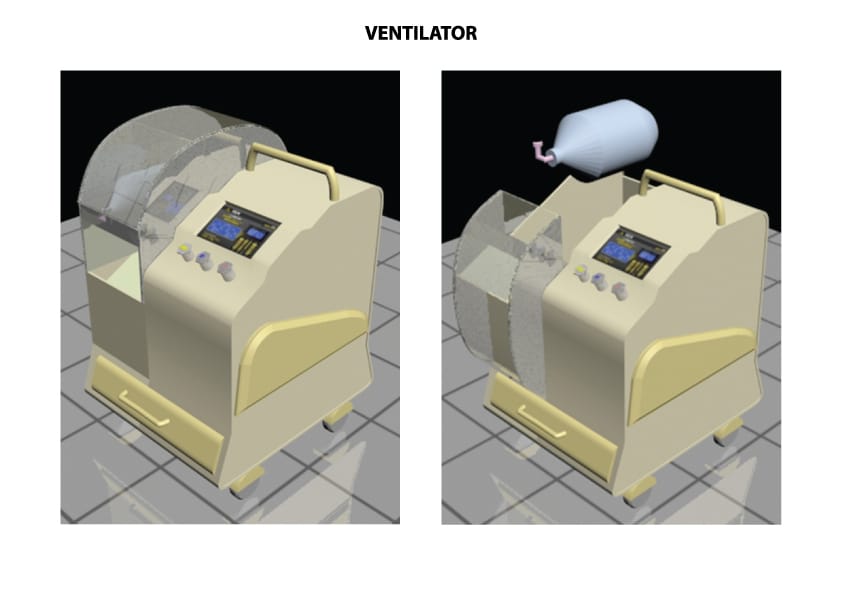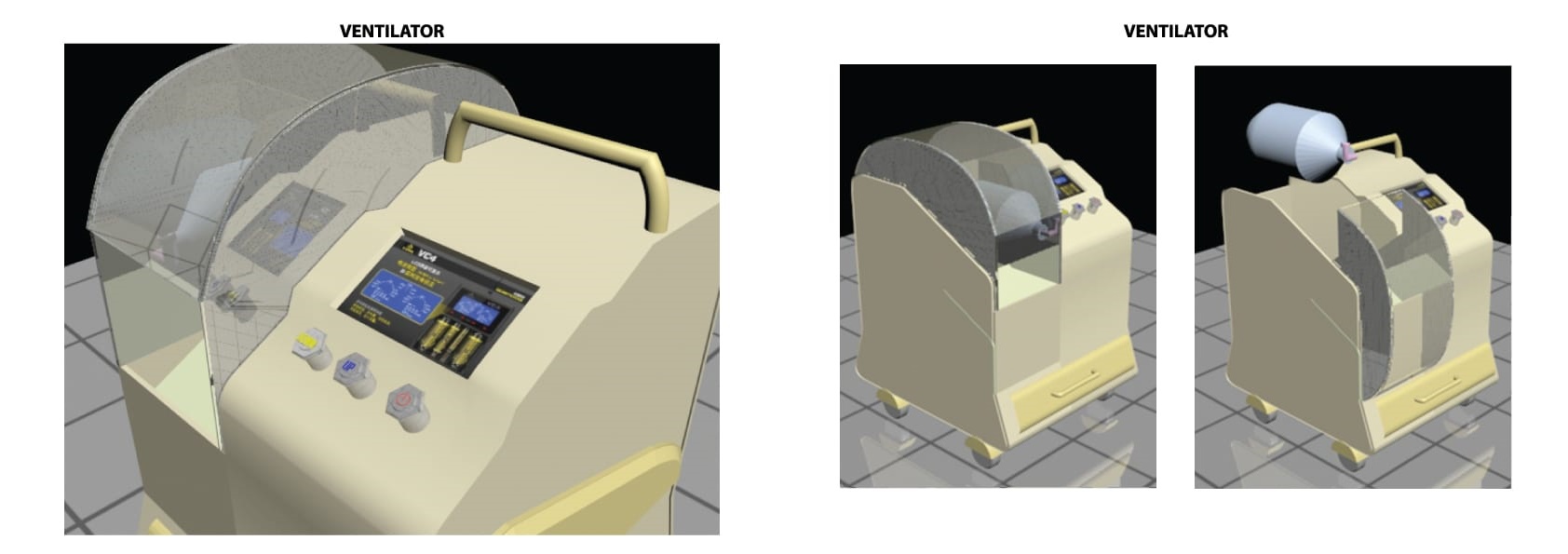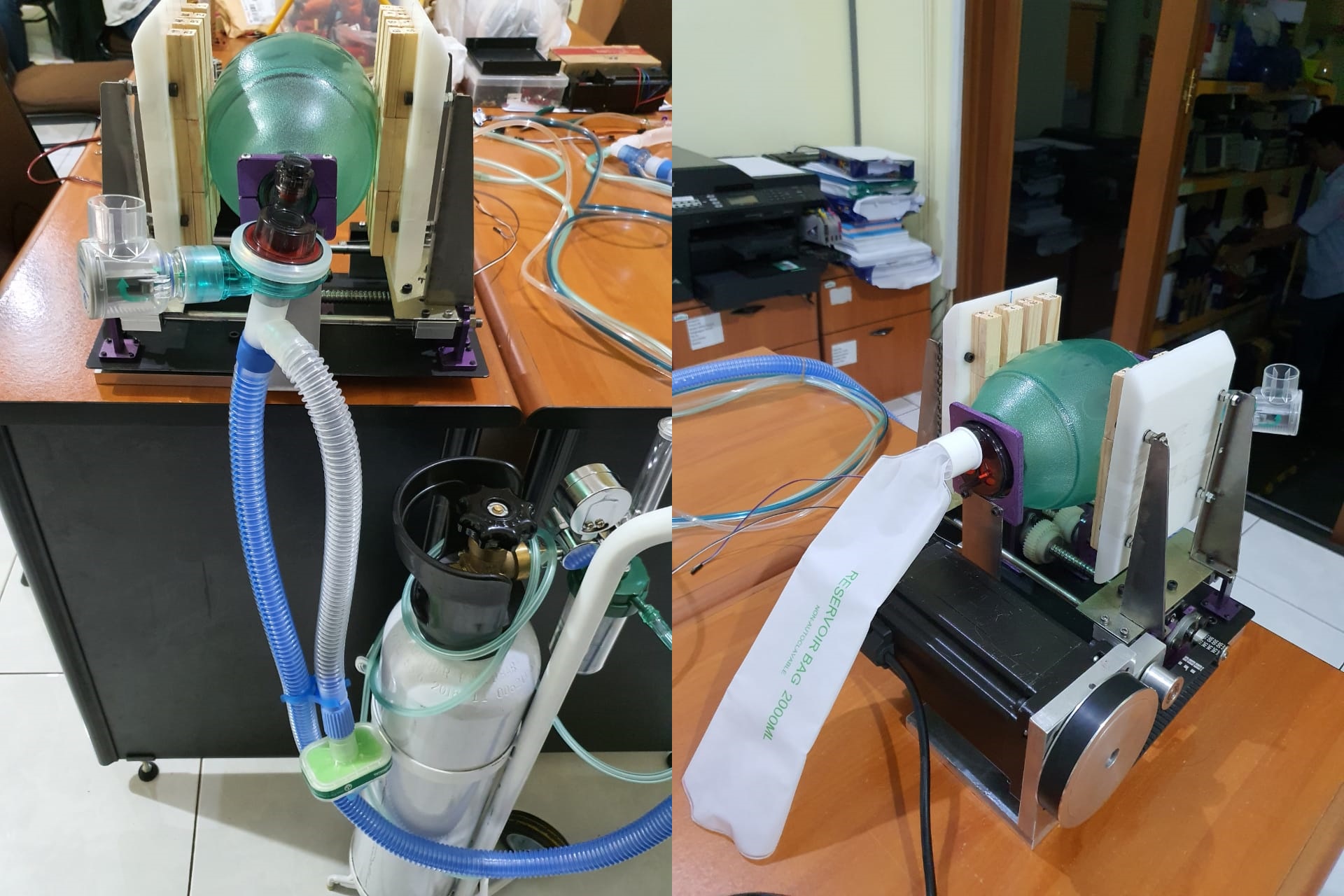ITB Develops a Multi User Ventilator
 *LC MUMU ventilator casing design. (Photo of doc. Augie Widyotriatmo S.T., M.T., Ph.D)
*LC MUMU ventilator casing design. (Photo of doc. Augie Widyotriatmo S.T., M.T., Ph.D)
BANDUNG, itb.ac.id - The availability of medical devices is important in handling the COVID-19 pandemic, both for patients and medical personnel. Ventilator is one of the medical devices that is needed as a breathing aid for COVID-19 patients who experience respiratory problems. In the midst of these conditions, ITB is currently developing a multi-user ventilator.
The multi-user ventilator development was led by Augie Widyotriatmo S.T., M.T., Ph.D, as a lecturer in the Physics Engineering Study Program, Faculty of Industrial Technology ITB. Together with the team, he made a ventilator called Low Cost Multi Use Multi User or simply abbreviated to LC MUMU. The name comes from lower ventilator production costs compared to other ventilators, can be used by multiple users, and has multifunctions since it offers four kinds of uses.
The development background of LC MUMU is the scarcity of ventilator units occurring in Indonesia and the world today. This is certainly a major obstacle in the process of handling the COVID-19 pandemic since the number of patients who die is largely due to respiratory failure. Invasive mechanical ventilators can prevent respiratory failure and support the lungs to heal.
LC MUMU is a further development inspired by MIT's low-cost ventilator (MIT e-vent, https://e-vent.mit.edu/). The focus of this development is the optimization of the volume that can be produced by this ventilator (reaching 1,000 ml) and has multifunctions for critical care which are mandatory volume control, spontaneous breath control, assisted control, and continuous positive airways pressure (CPAP).

In relation to the Covid-19 patient's stage, this ventilator can be used from the initial stage where the patient feels shortness of breath until the patient has symptoms of respiratory failure (generally referred to be treated in the ICU). These different patient conditions can be detected on the LC MUMU ventilator by using pressure and flow sensors. In addition, oxygen sensors are also added to give an indication of the gas supply. The safety system for the user's critical care ventilator complies with ISO 80601-2-12 part 2. "In essence, this ventilator can be used in patients with early stages of COVID-19 (can breathe on their own) to the one who is already in critical (there are symptoms of respiratory failure)," he said.
Of course, the development of the LC MUMU must go through several stages. The three main stages of working on the device are the mechanical actuator, sensor and control functions, and the power system. Then there are also other jobs such as work on tool casings, certification, and repairs to be able to meet the requirements of The Health Facilities Monitoring Agency to reach the final stage which is medical tests.
"Currently, our team has reached 70% of the whole process. The toughest challenge is from the performance points of the device because a ventilator is a device used to help human breathing. Some important parameters that are controlled are: tidal volume, respiration rate (RR), inspiratory expiratory ratio (I:E), positive-end expiratory pressure (PEEP), peak inspiratory pressure (PIP), and inspiratory pause pressure (IPP) / plateau pressure. If an error occurs, the consequences can be fatal to the patient. Therefore, achieving the performance requirements and the level of safety is an absolute thing. From the beginning, The Health Facilities Monitoring Agency has provided assistance in order to make LC MUMU reach the health standards. Beside that, component availability can be a problem at the production stage since many components still have to be imported, " he said.

*Breathing circuits and mechanical ventilators made by Augie Widyotriatmo S.T., M.T., Ph.D
The development of LC MUMU is a joint idea and work of various parties. They consist of several ITB lecturers and four collaborators (SMAN3 Bandung-Beteega '84 alumni, ITB '93 alumni, Gatot Subroto Army Hospital and RSHS Bandung). "All parties have the same desire to be able to contribute significantly to the COVID-19 pandemic through their knowledge and abilities. We have often heard from print and online media that some COVID-19 patients die because of the limited ventilators owned by hospitals. This due to the expensive price of a ventilator. InsyaAllah, with the knowledge and capabilities possessed, we endeavor to make a low-cost ventilator, "he added.
The main funding for the development of LC MUMU came from the Institute of Research and Community Service (LPPM) ITB, assistance from the Institute for Innovation and Entrepreneurship Development (LPIK) ITB, Mitsubishi Hitachi Power System Indonesia funding, and collaborators which are from Alumni SMAN 3 Beteega '84 and ITB Alumni '93.
The ITB team who was involved in developing the tool included the FTI-ITB Physics Engineering Study Program, who are Augie Widyotriatmo S.T., M.T., Ph.D., Dr. Vebi Nadhira S.T., M.T., and Dr. Ing. Ir. Parsaulian Siregar, Dipl. Ing. Then from the FTI-ITB Industrial Engineering Study Program, Rachmawati Wangsaputra, Ph.D., Ir. Hardianto Iridiastadi, MSIE., Ph.D., and Wildan Trusaji, S.T., M.T. and from the School of Business and Management ITB namely Dr. Dina Dellyana, MBA. The team of RSPAD Gatot Subroto doctors (Budiman S, Dr., Sp.BP-RE (K), MARS, Dr. Basuki Rakhmat, SpAn, KIC et al.), And RSHS (Dr. Osmond, SpAN, Dr. Erias, et al.) provide intensive input on the development of this ventilator. The team was also assisted by a mechanical systems team (Samudra P. Buana et al.) and around 13 students of Engineering Physics and Industrial Engineering; PT Sibernetika and CV. Cipta Sinergi Manufacturing who passionately contributes to help in the completion of the tool.
Augie hopes for support from all parties, both in the component supply chain and component developers. At the production stage, of course, government support (Ministry of Industry, Ministry of Finance, Ministry of Health) is very much needed to help, especially on the procurement of imported components and access to industry. It is hoped that Indonesian industry will be able to produce these components independently.
"For Indonesian students, especially ITB students, we need to strengthen our competencies according to our science field. Compete in real contribution to solving the nation's problems. No matter how small our contribution, it would be very meaningful towards Indonesia's prosperity. There are lots of things that need to be done both during the COVID-19 pandemic and post-pandemic. Let us work together to be able to face this difficult time, "he concluded.
Reporter: Christopher Wijaya (Pharmaceutical Science and Technology, 2016)
Translator: Evita Sonny

scan for download





